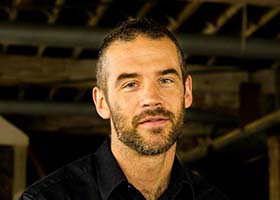
by Steve Risner
Ever think about how muscles work? Ever wonder what makes them contract? It’s a very complex and very interesting action that I hope to share with you today. It’s really pretty amazing stuff we take for granted. Even a rudimentary understanding of the inner workings of our bodies exposes the naivety of belief in Darwinian evolution, in my opinion.
There are three types of muscle tissue in the human body: skeletal, smooth, and cardiac. Skeletal muscles are all the muscles you have that help you move. You voluntarily control these for the most part. You have 640 of them, on average, in your body (meaning 320 pairs since we are essentially symmetrical side to side). These muscles vary greatly in their size, length and strength but they all have the same ability: they can get shorter. Ever consider that’s all your muscles are good for? They just can make themselves shorter. How they do this is pretty fantastic. Let me explain.
Skeletal muscles, the muscles that move your arms and legs for example, are made of long cylindrical tubes that stretch from one end of the muscle to the other. These tubes are filled with proteins called actin and myosin. Actin and myosin have a very interesting relationship. What happens between them during muscular contraction is the magic that makes muscles get shorter. Let’s follow this process from start to finish once so you can see just how complex and intricate this process is.
You begin a muscular contraction in your mind. You think, “I’d like to move my arm to pick up that pen.” So your brain determines in nanoseconds what muscles would be necessary for this action and recruits them to do the work. Your brain then sends a nerve impulse down the spinal cord to a spinal nerve which travels out of the spine to the muscles you need to do this task. That impulse is an electrical signal generated by the brain that travels, in some cases, up to six or more feet to reach the muscle on the other end of it at speeds near 120 m/s (270 mph)! Fast enough? Once the impulse reaches the end of the nerve, we need a way for that nerve to interact with the muscle fiber it “talks” to. There is actually no direct connection between the nerves and the muscle. There is a tiny space called a synapse here that chemicals travel across. These chemicals, called neurotransmitters, are released by the nerve cell and attach to specific places on the muscle fibers where they cause a very special reaction to take place. This neurotransmitter causes ATP,
which I’ve discussed in earlier writings, to attach to a myosin filament. I’ll leave at least half the details out so the overwhelm of information isn’t too excessive.
This is where the exciting stuff happens. This is where actin and myosin interact. Let me share an analogy with you to set the stage. Say you’re in a rowboat on a lake. You would like to travel across that lake using the oars. What would you do? You set your oars in the water and pull hard. When you reach the end of the stroke, you pull the oars out of the water, push them back up front, and reset them in the water where you create another stroke. You would do this over and over again until you reached the other side of the lake. This is very similar to how the actin and myosin in your muscles works. Myosin is the oar. Myosin consists of a series of heads that, at least in artistic renditions, resemble a golf club. But the heads of these clubs ratchet back and forth. As they attach to the actin, they all pull in one direction, creating a shortening of the muscle fiber. They then release the actin, reposition themselves, and contract again. This is just like our rowboat analogy. ATP is used over and over again to create what is known as a ratcheting affect, shortening the muscle fiber and creating a muscle contraction. Clear as mud, right?
This video is done well and vividly demonstrates this. Keep in mind that simulation is VERY slow compared to reality.
This is what happens each time you contract your muscles. But how do your muscles grow or gain strength? Believe it or not, as you begin to exercise, initially, the majority of your improved strength comes from your nervous system. It has less to do with the muscle fibers getting stronger and more to do with what is called
recruitment. This is how many muscle fibers in a muscle a nerve stimulates at one time and how well. Over time, with loading the muscle fibers, they will increase in size. This is done by adding more fibers or adding to the size of existing fibers. It’s pretty fascinating to think of how well built a living thing is. The design inference is incredible.
It’s important to remember, I think, that our real source of strength is Jesus Christ. When we realize and accept our weakness, He is able to perform powerful things using us. In our own strength, we can accomplish little and nothing of eternal value. I would still recommend working out spiritually. Study His Word. Spend time with Him in prayer (which is as much a listening time as a speaking time). Find a church body to be committed to and get involved. The church has a lot of muscle, though we’ve chosen for decades to hide it. Let’s wake up and flex a little.
This forum is meant to foster discussion and allow for differing viewpoints to be explored with equal and respectful consideration. All comments are moderated and any foul language or threatening/abusive comments will not be approved. Users who engage in threatening or abusive comments which are physically harmful in nature will be reported to the authorities.


0 comments:
Post a Comment